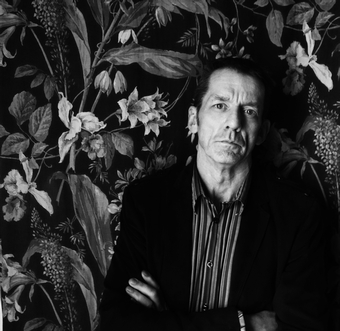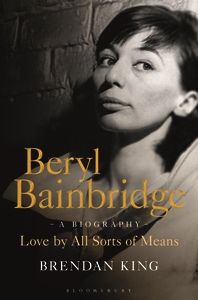When it came to writing his biography of the novelist Beryl Bainbridge, Brendan King decided early on to adopt a wholly digital approach. Here, the author of Beryl Bainbridge: Love By All Sorts of Means describes some of the challenges faced by the digital biographer.

Writing a biography has always required a lot of research, but the tools and the methods employed in the course of that research have changed radically over the last thirty years. The increase in the number of online genealogical databases and newspaper archives has had a big impact, and means that in many cases researchers no longer need to travel to a specific location to access physical material, nor do they need to spend long hours manually sorting through documents in the hope of finding the information they want. Now, a simple keyword search can produce the required information almost instantaneously.
But the fact that one can access archives and databases virtually is only one aspect of the change in the biographer’s methodology. Equally significant is the almost universal prevalence of the personal computer – and here I'm talking about its function as a storage device, rather than a tool for writing on. In the course of their research, biographers inevitably accumulate their own personal archive of digitised material about their subject. (My own archive of digitised material relating to Beryl Bainbridge runs to over 80 gigabytes, for example.) Like any physical archive, a digitised archive has to be sorted and stored in such a way that the vital pieces of information it contains can be retrieved when it comes to the writing process. In effect, digital biographers have to become the curators or archivists of their own research.
When it came to writing my biography of Beryl, I decided very early on that using file cards or other physical methods of organising the information I needed would not work for me, and that in order to keep track of the huge amount of data contained in her archives it would have to be a completely digitised project.
As I was lucky enough to have access to a large archive of Beryl’s manuscript material, I spent a considerable amount of time in the initial stages of the biography converting this material into its digital – and therefore searchable – equivalent. Typewritten documents were scanned and then put through an optical character reader, while handwritten manuscripts were copied and then transcribed into relevant files. Each novel had a folder containing the various stages of composition: drafts, manuscripts and proof copies, as well as the publicity material, cover and so on, associated with it. Letters were copied, converted into PDFs and then sorted into folders, ordered alphabetically by correspondent, and ranged chronologically within each folder. Other forms of hard information, such as birth, marriage and death certificates, electoral registers and probate records were copied using either a digital camera or through screen-grabs and arranged chronologically in separate folders dedicated to the individual concerned.
Often the quickest and most practical method is to digitise an archive as fully as possible without knowing precisely how relevant the material is. Trying to sift through a physical archive in situ and search for specific pieces of information is a time-consuming and wasteful process. Moreover, it is often only later on when you are putting the material into written form that you discover what pieces of information are relevant to the story you are telling.
Although this digitising and classifying process requires a heavy initial investment of time it does produce multiple benefits. The very process of digitising an archive and organising it on a computer gives you a deep familiarity with its contents, an appreciation of its scope that is sometimes difficult to gauge in a physical archive where the material is for the most part hidden away in boxes. A digitised archive has the added practical utility of being able to be stored on a laptop, meaning that you always have the archive with you, available to consult or work on wherever you happen to be. This is an essential benefit if you have to spend time on the move, away from your own study in order to consult or work in a library, or when on research trips and conducting interviews.
Everyone’s method of classifying digitised material will be different. For me, given the abundance of letters, unpublished journals and newspaper cuttings in Beryl’s personal archives, it made sense to organise the digitised material into files that mirrored these discrete sources of information. Letters that Beryl had sent constituted one file, letters she had received another, while all her diaries and journals were assembled chronologically into yet another. A final holdall file contained digitised versions of newspaper articles either by or about Beryl, as well as any clippings that made reference to those who played a part in her life.
The contents of each file was not only searchable in itself, but also at a system level, meaning that with one global search I could track down Beryl’s references to particular people, events or places, whether published or unpublished. The material within each file was also organised chronologically, meaning that information in different files could easily be cross-referenced by date, allowing for a more comprehensive overview of any particular situation or event.

The ability to be able to cross-reference material in this way and establish an accurate chronology proved essential when it came to writing the biography itself. Over the course of her long writing career Beryl had told and retold numerous anecdotes about herself and her past, both in interviews and in her journalism. But it soon became apparent that these varied accounts did not always accord with the facts, or indeed with each other – after all, Beryl was often recounting things that had happened 40, 50 or even 60 years before. However, the ease with which the material contained in contemporary documents, such as Beryl’s letters or her private journals, could be cross-referenced once they were in digital form offered a secure path through what would otherwise have seemed like a maze of misinformation and contradiction. Having known Beryl for so long and owed her so much personally in terms of her friendship and generosity, the least I could do was to clear away the accumulated mass of half-truths and misunderstandings surrounding her life and present it in as true a way as possible.
Beryl Bainbridge - Love By All Sorts of Means: A Biography was published by Bloomsbury Continuum on 8 September 2016. Buy at Bloomsbury.com
Comments